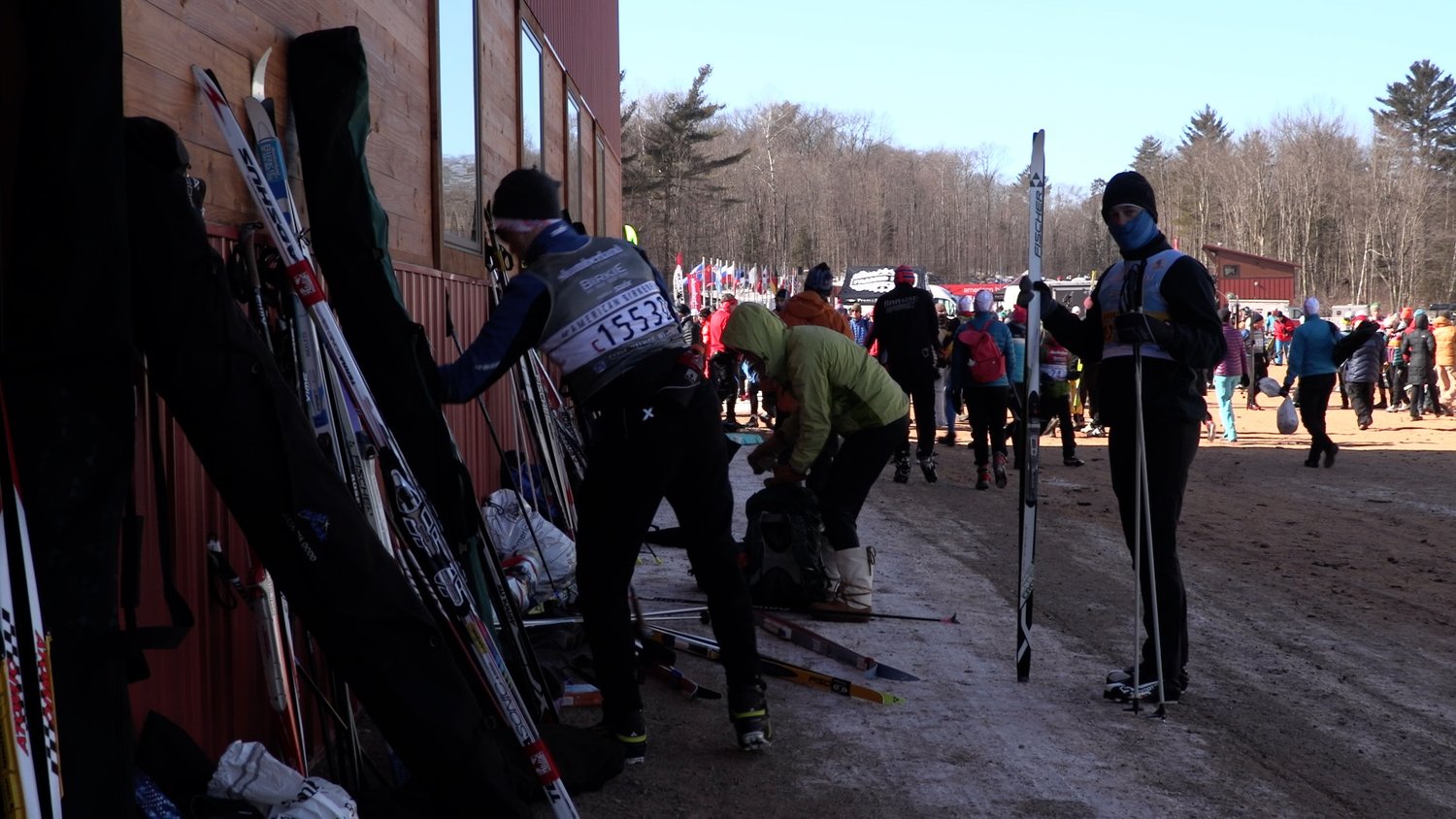
PRESQUE ISLE, Maine — Although much of Aroostook County got about 2 feet more snow than average this winter, a warming global climate raises major concerns for people who enjoy snow sports or earn a livelihood from them.
More than 30 people turned out for a Presque Isle screening of the documentary “Saving Snow” at Northern Maine Community College Monday night. Produced by the group Adaptation Now, the documentary explores what a warming global climate means for winters in places like Maine, Vermont and the Rocky Mountain West.
For many northern and mountain regions, winter is a key part of the culture, heritage and economy: from skiing and snowmobiling to ice fishing and dog sledding. These and other natural resource-based activities are under threat, or in some places, disappearing, as winters have become shorter and warmer.
“I want to continue experiencing my love of winter,” said Julie French of Presque Isle before the screening. French helped organize the screening with the Maine chapter of the Citizens’ Climate Lobby, and said she wanted to spur a conversation about climate change’s impacts on northern Maine and solutions that could address or mitigate the problem.
“Saving Snow” features dispatches from places around the country that have long catered to winter tourism and are now being impacted by climate change, including Rangeley, Maine.
Kevin Slater and Polly Mahoney of the western Maine-based Mahoosuc Guide Service tell their story of struggling to offer consistent dog sledding trips amid major winter thaws. They also speak about the declining moose population, due in part to a surge in winter ticks.
They’re been contemplating whether or not to continue raising huskies and offering dog sledding.
While the past two winters have left snow sports enthusiasts in Aroostook County with few complaints, the global trend of a warming climate raises the question of whether northern Maine’s winters will still be reliable enough for several months of snow sports in a few generations.
And in the past few years, some odd stretches of weather left some long-timers scratching their heads. Last September’s potato harvest was briefly halted amid record-breaking heat, including back-to-back days with highs of 88 degrees. The 2015-2016 winter also brought several major thaws and required organizers of the World Cup Biathlon to make snow and truck snow in to the Nordic Heritage Center in Presque Isle.
Last year, the largest cross country ski race in North America, the American Birkebeiner in northern Wisconsin, was cancelled after unseasonably warm weather and rain. The “Birke,” as the 31-mile race is known, attracts as many as 10,000 skiers annually and brings a major economic boost to the rural communities. In recent years, the snow has been so inconsistent that the Birke organizers spend more than $200,000 to make the course skiable.
Alpine ski areas also have been some of the hardest hit by changing climate. They’ve been heavily investing in snowmaking over the last two decades, and also diversifying into offering summer and fall activities.
But in the future, snowmaking may not save ski trails if it’s too warm to make snow, as Jeff Spring of Vermont’s Smugglers’ Notch Resort said in the documentary.
“What happens when we have a month of 40 degrees in February?” Spring asked.
Although climate change is a global issue, ski industry leaders profiled in the film are taking local actions such as installing renewable energy systems. One ski community, Park City, Utah, is aiming to have the entire city of some 8,000 people powered entirely by renewable energy by 2032.
Connie Potvin of Hampden, a member of the Maine chapter of the Citizens’ Climate Lobby, said the organization is backing a bipartisan proposal to address climate change on the national level with a fossil fuel fee and dividend, as well an end to government subsidies and tax breaks for fossil fuels.
That kind of policy would levy a fee on fossil fuel producers and distribute the revenues to American families, who could invest the returns in renewable energy or home efficiency upgrades.
“This would be equitable and market-based,” Potvin said.







